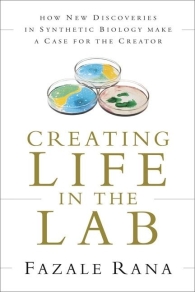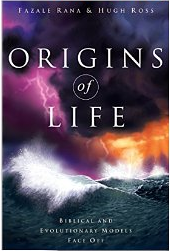Abiogenesis is the assertion that all life naturalistically and mechanistically developed from inorganic, inanimate matter. Outdated textbooks characterize this seamless molecules-to-men progression as indubitably supported by the scientific evidence. Those who discern a break in the continuum may prefer panspermia in order to relocate the discontinuity to an unknown extraterrestrial site and/or intelligence. In reality, scientists struggle to sufficiently define “life.” As biochemist Juan Oró observed, “It is easier to recognize life…than it is to define it.”1
Mainstream researchers working in origins-of-life (OOL) disciplines acknowledge that there is currently no viable OOL scenario based on today’s knowledge of early Earth conditions. The environment was too hostile and the time constraints too short. Many molecular transitions proposed by various OOL models may be scientifically plausible under highly specified conditions, but their undirected progression without confounding interruption is not scientifically probable.2
In Chapter 1 of Schopf’s “Life’s Origin,” Oró interacts with the worldview implications of a secular and cosmic OOL. He offers a utopian prescription for “children on the Universe” to coexist peacefully on Earth: treat[ing] others as we would like them to treat us.”3 However, his naturalistic worldview provides no solution or redress when its pivotal Golden Rule (borrowed from Christianity) is not observed. Why peace rather than war when nature is “red in tooth and claw” and “survival of the fittest” has brought you thus far? Unfortunately, the material universe is a vast and uncaring parent, and to be its child is to be bereft of ultimate meaning and significance. Children of a Creator, however, possess an eternal identity and purpose. To be created intentionally and loved sacrificially confers a knowledge of one’s value.
 But what humans expend great cost and energy to create a mechanistic form of life – a self-replicating machine, programmed by scientists and composed of organic compounds fashioned from existing matter? It might happen in the not-so-distant future.4 Yet are we so boundless in our character and capabilities that we might endow any future version of it with “inalienable rights”? Might we grant access to other dimensions to which we have no passage or enact transcendent moral law over which we have no governance?
But what humans expend great cost and energy to create a mechanistic form of life – a self-replicating machine, programmed by scientists and composed of organic compounds fashioned from existing matter? It might happen in the not-so-distant future.4 Yet are we so boundless in our character and capabilities that we might endow any future version of it with “inalienable rights”? Might we grant access to other dimensions to which we have no passage or enact transcendent moral law over which we have no governance?
Human endeavors to create life should not be unanticipated; we are creative because we are made in the image of our Creator. Nevertheless, even the successful development of synthetic life certainly would not be evidence of an unplanned advancement of molecular transitions on the early Earth. Rather, it would be a brilliantly contrived and highly controlled endeavor indicative of intelligent agency.
Hebrews 2:3-4 tells us that “…the builder of the house has more honor than the house itself. For every house is built by someone, but the builder of all things is God.” Perhaps we will find that what is true of “houses” will be also be true of man-made organisms. As elegant as a synthetic cell might be, the sophistication of its human designer will far exceed it. Then, in turn, the grandeur of God is still greater. He is the Builder of all things, providing both the minds and materials for every innovative endeavor.
1 William J. Schopf, ed., Life’s Origin: The Beginnings of Biological Evolution (Berkeley, CA: University of California Press, 2002), 3.
2 Fazale Rana and Hugh Ross, Origins of Life (Covina, CA: Reasons to Believe Press, 2014), 26-7.
3 William J. Schopf, ed., Life’s Origin: The Beginnings of Biological Evolution (Berkeley, CA: University of California Press, 2002), 40-1.
4 Fazale Rana, Creating Life in the Lab (Grand Rapids: Baker, 2011), 20.
